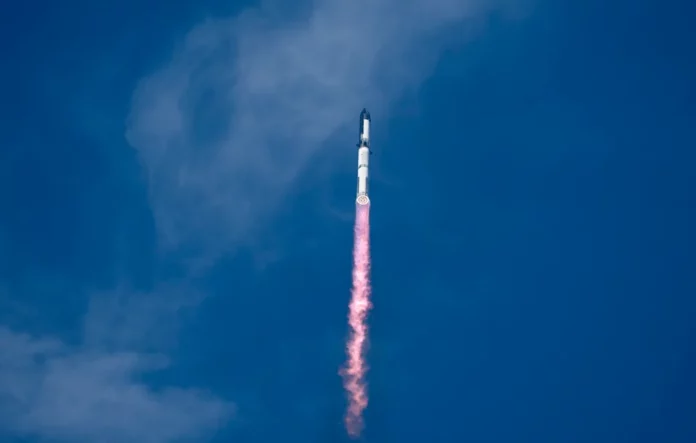The Starship super-heavy launch vehicle lifted off from SpaceX’s Starbucks in Texas for its ninth test flight on Tuesday at 19:37 EST. This was the first flight of Starship with the reuse of the super-heavy booster, which was also used for the seventh test flight of the launch vehicle. During the seventh and eighth flights of the spacecraft, its second stage, or the Starship spacecraft itself, exploded during ascent. This time, the stage (also known as the “Ship”) completed its ascent and even reached space, but it was one victory in a test flight with mixed results.
SpaceX’s Starbase launch tower caught the super-heavy launch vehicle after it flew back with its “chopsticks” during two previous flights. For this flight, the company conducted tests on the launch vehicle that it had never done before, including making it fly at a higher angle during descent. This increases the atmospheric drag of the launch vehicle, slowing its descent, so it requires less fuel. Therefore, the company decided to let the launch vehicle fall into the ocean, as the test would have made it difficult to catch it with the Starbase stick manipulators. However, SpaceX lost contact with the Super Heavy shortly after it began to burn on landing, and six minutes after launch, it experienced a “rapid unplanned disassembly.”
In the meantime, the spacecraft’s stage was able to enter a suborbital trajectory and was supposed to deploy eight Starlink simulators while in space. Ultimately, it was unable to deploy the simulator satellites because the payload bay door jammed and would not open. The spacecraft also encountered a positioning control error that prevented it from taking the position required for reentry. It began to fall due to a leak that caused a loss of pressure in the main tank before SpaceX lost contact with it after 46 minutes of flight. Although a controlled landing was not possible, the company still expects the wreckage to fall in the planned danger zone in the Indian Ocean.
SpaceX will not get all the data it had hoped to get from this flight, but Elon Musk said there is still “a lot of good data to analyze.” He also said that the company will launch Starship for the next three flights every three to four weeks.









